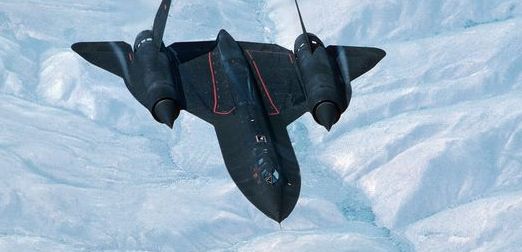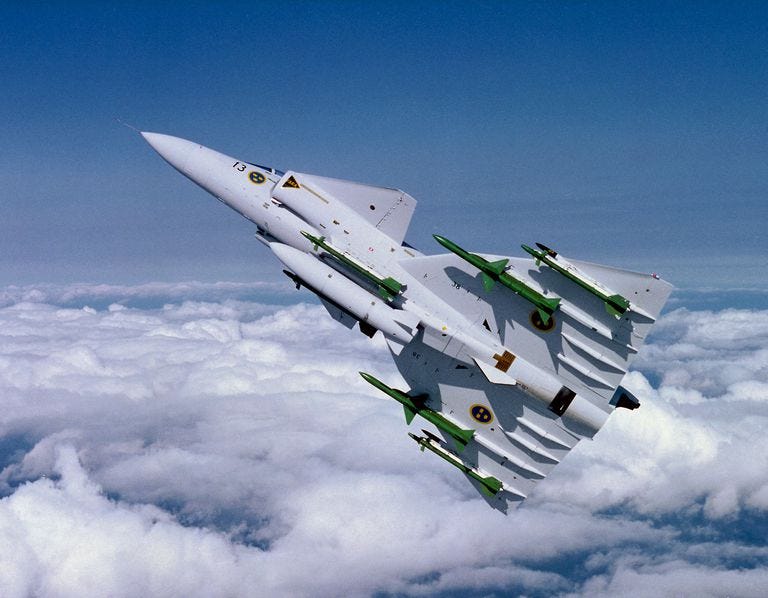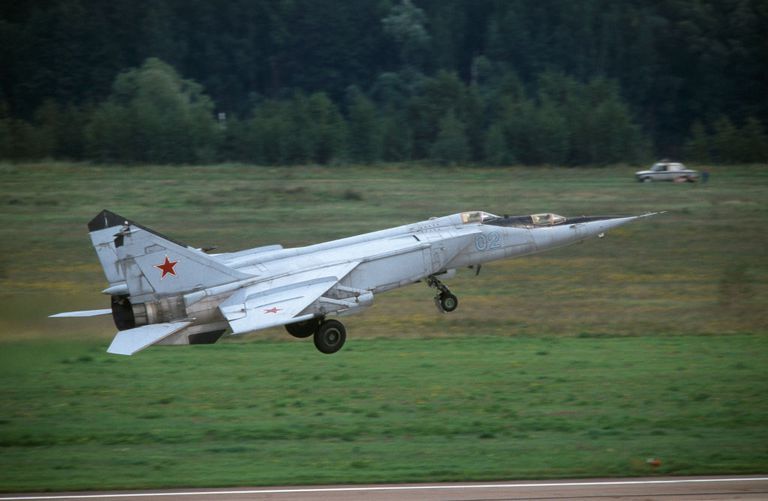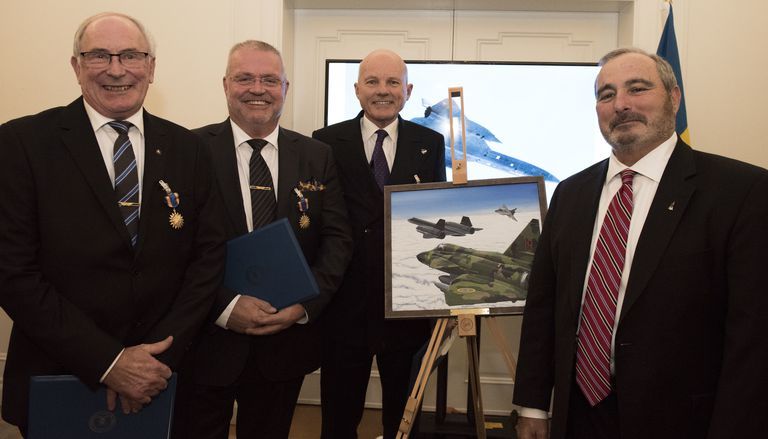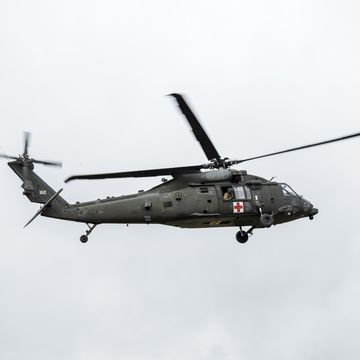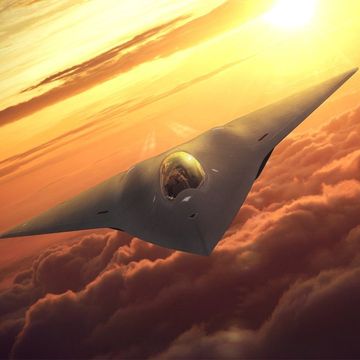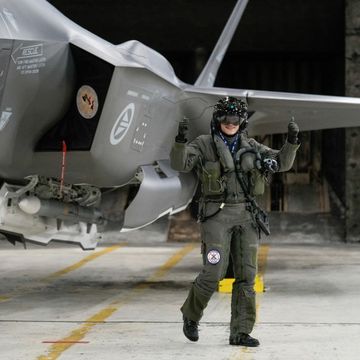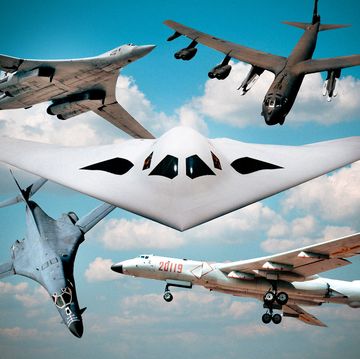Three decades ago, a group of Swedish fighter pilots who were trained to intercept America’s high-flying SR-71 suddenly became guardian angels for the crew of one stricken Blackbird. This week, the pilots were awarded U.S. Air Medals for bravery.
The incident happened in 1987 in the skies over the Baltic Sea. Back then, SR-71 Blackbirds based at RAF Mildenhall in the United Kingdom flew weekly missions out over the Baltic Sea, toward Soviet bases in Latvia, Estonia, Lithuania, and Kaliningrad. The SR-71s flew a loop that took them across the length of the Baltic States, then back around and in between the Swedish mainland and the island of Gotland.
Swedish pilots in Viggen fighter jets regularly trained to intercept the SR-71, though for the sake of practice, not malice. During this fateful flight of the “Baltic Express,” a Blackbird piloted by Lt. Cols. Duane Noll and Tom Veltri experienced engine trouble, losing power in one of the plane’s powerful Pratt & Whitney J58-1 afterburning turbofan engines.
The stricken plane apparently veered off course and flew into Swedish airspace over Gotland, descending more than ten miles to an altitude of 25,000 feet. The plane received an escort from two Swedish Air Force pilots who prepared to defend the SR-71 from possible interception by Soviet fighter jets.
As one of the four Swedish pilots involved in the incident explained at the medal ceremony: “We were performing an ordinary peacetime operation exercise. Our fighter controller then asked me are you able to make an interception and identification of a certain interest. I thought immediately it must be an SR-71, otherwise he would have mentioned it.”
The Viggens, piloted by Swedish air force Col. Lars-Eric Blad, Majs. Roger Moller and Krister Sjoberg, and Lt. Bo Ignell, caught up with the SR-71—perhaps the only time in history an aircraft has ever intercepted a SR-71. Once they noticed it was flying on just one engine, the Air Medal citation says, they “decided to render support to the aircraft by defending it from any potential third-party aircraft that might have tried to threaten it. The pilots then accompanied the aircraft beyond the territorial boundaries and ensured that it was safely recovered.”
The Air Medal ceremony was held in Stockholm, Sweden, on November 28, with one of the SR-71 pilots and all four Swedish Air Force pilots in attendance.
Why would the SR-71 need an armed escort? The Baltic Express flew near Soviet airspace on a weekly basis, taunting the USSR’s best pilots who struggled in vain to intercept it. The Soviet Air Force maintained a squadron of MiG-25PD “Foxbat” high-speed interceptors based in East Germany and always sent one MiG to attempt an intercept of the Baltic Express—without firing weapons. If the Soviets had gotten wind that the SR-71 was crippled and vulnerable, they could have attempted a shoot-down. Although a provocation, the use of deadly force by the Soviets was not unknown.
According to a U.S. Air Force article, the incident was classified by the Pentagon top secret until last year. However, part of the story shows up in the book Lockheed Blackbird: Beyond the Secret Missions. In it, a retired Swedish Air Force fighter controller mentions Swedish attempts to intercept the fighter and one incident in which a SR-71 was photographed by Viggen pilots flying on one engine. The photographer was obviously one of the four Swedish pilots honored this week.
The U.S. Air Force citation says the Swedish air crew was prepared to defend the SR-71 from “third parties,” but the complexity of the Cold War means the truth was probably a little more nuanced. Sweden was neutral during the Cold War and theoretically treated all parties, capitalist and communist, the same. In any fighting between the United States and Soviet Union, Swedish forces would likely observe strict neutrality—unless the fighting took place in Swedish territory.
The Viggen pilots could have been prepared to defend the SR-71 as a stricken aircraft as long as it was in Swedish airspace, and cut it loose once it moved on. (U.S. fighters were undoubtedly racing from bases in the United Kingdom, the Netherlands, and West Germany to take over escort duties once the Blackbird had left Sweden.)
Today Sweden and the United States are much closer, with U.S. forces regularly exercising with the Swedish armed forces in ways that were unthinkable during the Cold War.

Kyle Mizokami is a writer on defense and security issues and has been at Popular Mechanics since 2015. If it involves explosions or projectiles, he's generally in favor of it. Kyle’s articles have appeared at The Daily Beast, U.S. Naval Institute News, The Diplomat, Foreign Policy, Combat Aircraft Monthly, VICE News, and others. He lives in San Francisco.
